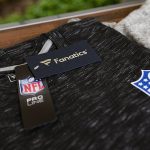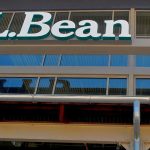Thor Industries Inc. reported sales in the first quarter ended October 31 rose 17.6 percent due to strong demand across its RV segments.
“We are pleased to report a solid start to our fiscal year with strong year-over-year growth across all of our major metrics, including net sales, gross margin and net income attributable to Thor. Our backlog continued to increase in the first quarter, setting a record, while dealer inventories continued to decline as many of our product shipments are going directly to fill existing end-customer orders. To address the increase in demand, we have increased production levels. Even with our higher production output and deliveries, demand and backlog for our RV products continue to grow,” said Bob Martin, president and CEO of Thor Industries.
“We are working hard to manage through temporary supply chain issues, which are currently common across the entire RV industry. We are confident that once these temporary supply chain constraints are mitigated, our shipments will increase further. We also believe it will take a number of months of production to first fill dealer presold orders before we will begin a restocking cycle to help our dealers get their inventory back to a more historically normal level,” added Martin.
First-Quarter Financial Results
First-quarter net sales were $2.54 billion, compared to $2.16 billion in the first quarter of fiscal 2020. This year’s first-quarter net sales include $1.39 billion for the North American Towable RV segment, $493.9 million for the North American Motorized RV segment and $602.5 million for the European RV segment.
Consolidated gross profit margin was 14.9 percent for the first quarter of fiscal 2021, compared to 14.3 percent in the corresponding period a year ago. The improved gross profit margin is primarily due to the increase in net sales, resulting in a reduction of the manufacturing overhead percentage, and favorable warranty experience trends, partially offset by higher labor costs due to the current competitive RV labor market conditions in Northern Indiana.
Net income attributable to Thor and diluted earnings per share for the first quarter of fiscal 2021 were $113.8 million and $2.05, respectively, compared to net income attributable to Thor and diluted earnings per share of $51.1 million and $0.92, respectively, in the prior-year period.
The company’s effective income tax rate for the first quarter of fiscal 2021 was 21.0 percent compared with 24.5 percent for the first quarter of fiscal 2020. The primary driver of the decrease in the effective tax rate between comparable periods was additional income tax expense in the three months ended October 31, 2019 from the vesting of share-based compensation awards. The company estimates its effective income tax rate for fiscal 2021 will be between 19 percent and 22 percent before consideration of any discrete tax items. The actual effective income tax rate will be dependent upon the mix of foreign and domestic pretax earnings and subject to the impact of foreign currency exchange rates.
Net cash used by operating activities for the first quarter of fiscal 2021 was $81.3 million compared to a use of $52.0 million in the first quarter of fiscal 2020. The company’s cash flow is seasonal, and the net cash used by operating activities in the first quarter of fiscal 2021 increased compared to the prior-year period, reflecting an increase in inventory and accounts receivable in the current period, partially offset by an increase in accounts payable. During the fiscal first quarter of 2021, the company made payments of $59.7 million on its debt related to the acquisition of its European operations.
Segment Results
North American Towable RVs
North American Towable RV net sales were $1.39 billion for the first quarter of fiscal 2021, compared to first-quarter net sales of $1.20 billion in the prior-year period. The increase was driven primarily by an increase in unit shipments, partially offset by a change in product mix.
North American Towable RV gross profit margin was 15.8 percent for the first quarter of fiscal 2021, compared to 15.3 percent in the prior-year period. The improvement in gross profit margin for the first quarter was primarily the result of a reduction in sales discounts, which effectively lowered material costs as a percentage of net sales, and favorable warranty experience trends, partially offset by higher labor costs due to the current competitive RV labor market conditions in Northern Indiana.
North American Towable RV income before income tax for the first quarter of fiscal 2021 was $141.2 million, compared to $104.3 million in the first quarter last year, driven by the increase in North American towables net sales.
North American Towable RV backlog was $4.40 billion at October 31, 2020, an increase of $3.33 billion, or 312.1 percent, compared to $1.07 billion as of October 31, 2019.
North American Motorized RVs
North American Motorized RV net sales were $493.9 million for the first quarter of fiscal 2021, compared to $415.9 million in the prior-year period. The increase in motorized net sales for the quarter was driven primarily by higher unit sales in our Class B and Class C motorhomes.
North American Motorized RV gross profit margin was 13.8 percent for the first quarter of fiscal 2021, compared to 10.8 percent in the prior-year period. The improvement in gross profit margin for the first quarter was primarily the result of a reduction in sales discounts, which effectively lowered material costs as a percentage of net sales, and favorable warranty experience trends, partially offset by higher labor costs due to the current competitive RV labor market conditions in Northern Indiana.
North American Motorized RV income before income tax for the first quarter of fiscal 2021 increased to $41.6 million compared to $21.8 million a year ago, driven by the increase in North American motorized net sales.
North American Motorized RV backlog was $2.22 billion at October 31, 2020, an increase of $1.55 billion, or 230.6 percent, compared to $670.0 million as of October 31, 2019.
European RVs
European RV net sales were $602.5 million for the first quarter of fiscal 2021, compared to $493.0 million in the prior-year period. European net sales increased by 22.2 percent, driven primarily by an increase in unit shipments, an increase in the overall net price per unit due to the impact of changes in product mix, and a favorable impact from year-over-year changes in foreign currency exchange rates.
European RV gross profit margin was 12.0 percent of net sales for the first quarter compared to 13.1 percent in the prior-year period. Gross profit margin was impacted by product mix with a higher concentration of the motorcaravan and campervan motorized product sales in the current year, which have a higher material cost percentage than caravan products.
European RV net loss before income tax for the first quarter of fiscal 2021 was $5.5 million, compared to a net loss before income tax of $23.0 million during the first quarter of fiscal 2020. The decrease in loss before income taxes was driven by an increase in European recreational vehicle net sales and a decrease in selling, general and administrative expenses.
European RV backlog was $2.31 billion as of October 31, 2020, an increase of $1.02 billion, or 78.7 percent, compared to $1.29 billion as of October 31, 2019.
“Each of our business segments delivered stronger operating results in the first quarter as compared to the prior-year first quarter. Our improved financial performance demonstrates our ability to successfully ramp up production volumes in response to surging demand while managing our expenses to achieve improved margins and net income in an unusually complex operating environment,” said Colleen Zuhl, Senior Vice President and CFO, Thor Industries
“Historically, our cash flow tends to be seasonal as we build inventory during our first and second fiscal quarters in preparation for the typical demand cycle for our products. This is true again this year, with the added complexity of carrying additional chassis and inventory due to increased production and higher work-in-process levels as a result of temporary supply chain constraints. We expect overall working capital levels to remain elevated given strong market demand but expect our work-in-process to normalize to appropriate levels during the fiscal year as the supply chain stabilizes and we ship completed work-in-process units. We continue to have strong liquidity with $337.4 million of cash and cash equivalents as of October 31, 2020, and approximately $720 million currently available for borrowing under our ABL. Our cash utilization priorities remain consistent with our historical priorities, namely, we will invest in our businesses, grow our dividend over time, further reduce our acquisition-related debt obligations, and support opportunistic strategic investments, including acquisitions, to enhance long-term shareholder value,” concluded Zuhl.
Outlook
“Our financial results were very strong for the first quarter, despite the continued challenges we faced as a result of the pandemic. Our teams have done a great job of managing through what continues to be an uncertain operating environment. We view the current chain constraints to be temporary in nature, and expect to achieve continued growth in fiscal 2021 supported by our October 31st backlog of $8.92 billion,” said Bob Martin, President and CEO, Thor Industries.
“We believe the long-term growth potential for the RV industry remains very positive. While it is certainly true that the impact of COVID-19 has brought new buyers into our industry, both Thor, specifically, and the industry, generally, were attracting new buyers and saw strong demand independent of the pandemic. People have shown that they appreciate the long-term value proposition RVs offer – affordability, a vacation in a controlled environment, freedom, and outdoor fun. We also believe that the desire by consumers to ‘control their own destiny’ and have safer, socially distanced vacation activities has been a key factor in driving recent RV demand and will continue to be a factor for the foreseeable future.
“On December 1, 2020, the RVIA updated their most-likely forecast and now expects an increase of 18.7 percent in calendar 2021 shipments over their most-likely estimate for calendar 2020 shipments. We support their forecast and believe there is potential for upside to this forecast based on current industry conditions,” concluded Martin.















